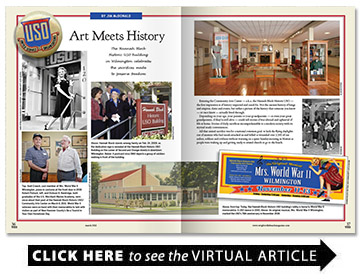Art Meets History
The Hannah Block Historic USO Building in Wilmington celebrates the sacrifices made to preserve freedom
BY Jim McDonald
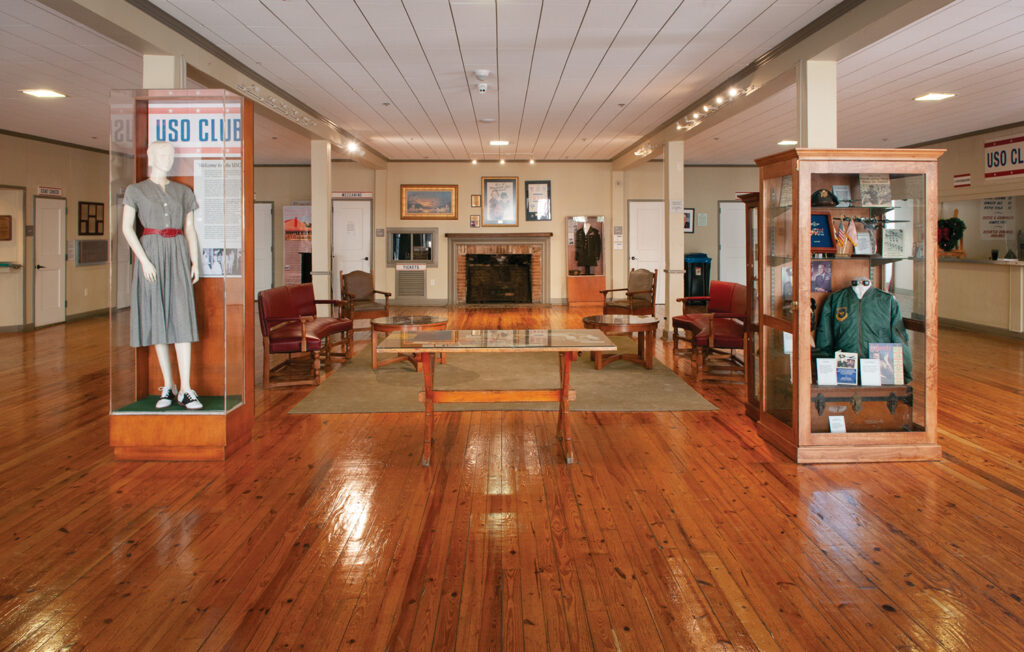
Entering the Community Arts Center — a.k.a. the Hannah Block Historic USO — the first impression is of history respected and cared for. Not the ancient history of kings and empires, dates and events, but rather a picture of the history that someone you know — or once knew — actually lived through.
Depending on your age, your parents or your grandparents — or even your great grandparents, if they’re still alive — could tell stories of war abroad and upheaval of life at home. Stories of daily sacrifices incomprehensible to a modern society with its myriad ready conveniences.
All that united sacrifice was for a national common goal: to kick the flying daylights out of enemies who had sneak-attacked us and killed or wounded over 3,500 of our sailors, soldiers and civilians without warning on a quiet Sunday morning in Hawaii as people were waking up and getting ready to attend church or go to the beach.
Suddenly we were at war again, a mere 23 years after the end of World War I, which had been called “the war to end all wars.”
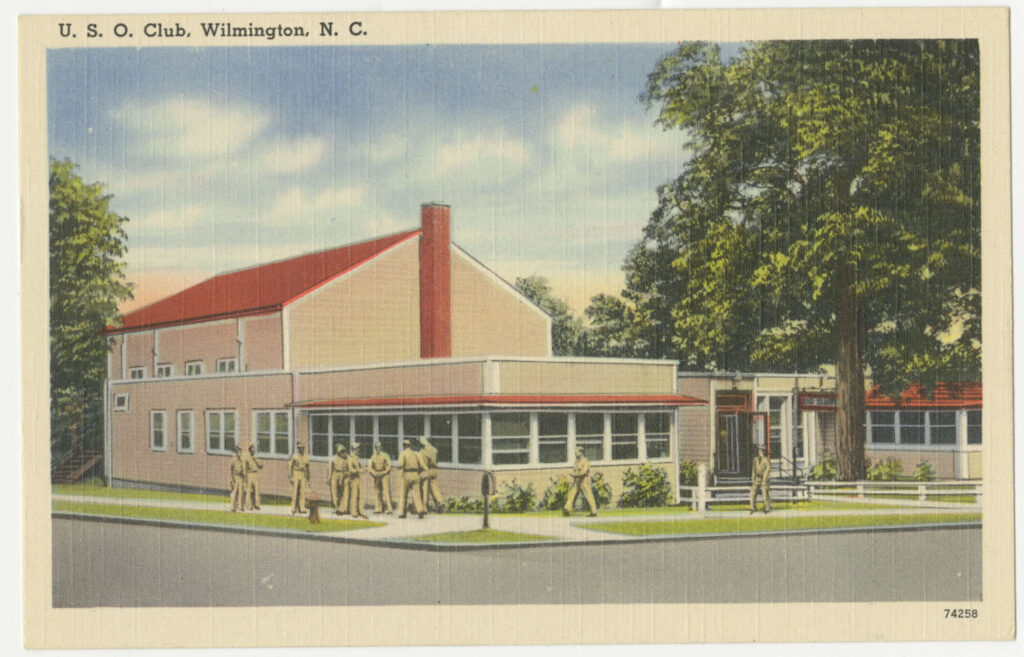
The nation’s shock turned swiftly to outrage. Americans drew together with united purpose. Young men — including many in their teens who lied about their age — rushed to enlist in the Army, the Navy, the Marines and the Coast Guard. At home, people sacrificed many of the niceties of life so money and materials could be diverted to the war effort.
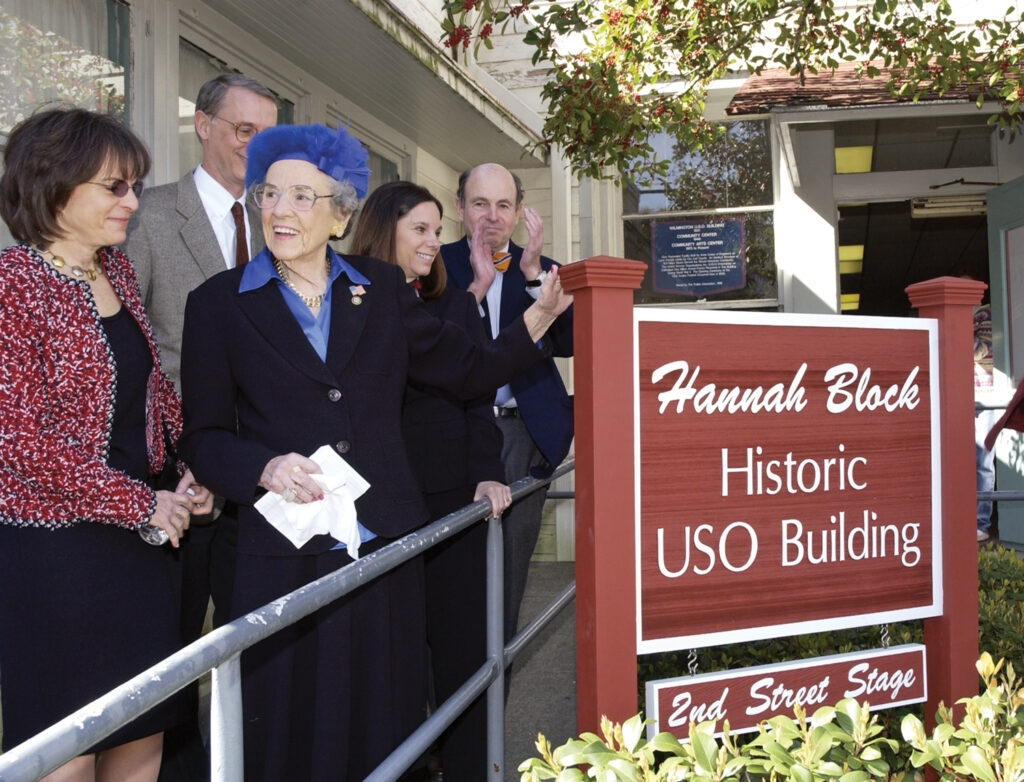
What does World War II — which ended 77 years ago — have to do with Wilmington’s Community Arts Center?
The lobby serves as a home front museum, with exhibits offering a glimpse of life during the war years for troops and civilians. The exhibits feature models of warships and warplanes, photos, recruiting posters and more.
The building opened as a United Service Organizations Center in December 1941, the same month as the attack on Pearl Harbor. The USO was founded in WWII to entertain the troops and provide service facilities. The center in Wilmington served Armed Services personnel from around the region, giving troops a needed break from their duties. “At its peak some 63,000 personnel used the facility monthly, and more than 2 million overall,” says one of the center’s brochures.
The center marked the 80th anniversary of the beginning of service to military personnel in December 2021. More recent history involves service to the community in the form of cultural events, visual and performing arts instruction for all ages, exhibits, rental studios, classrooms for art teachers, spaces for meetings, and wedding receptions.
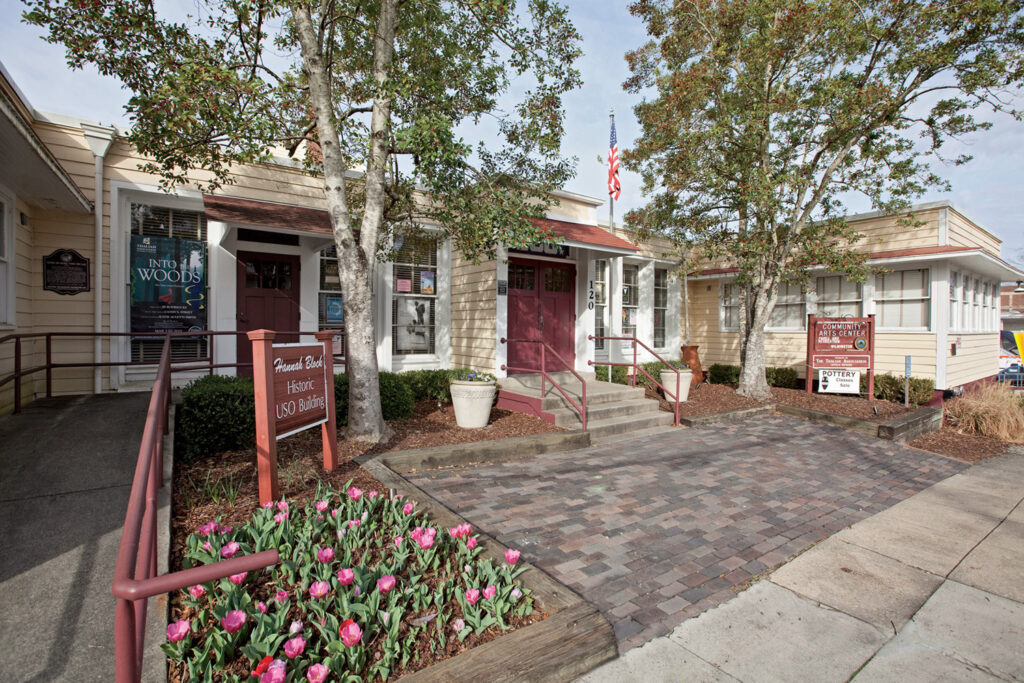
The Hannah Block Historic USO Building is helping fulfill the vision of John Adams, Founding Father and second U.S. president, who wrote to his wife, Abigail, during the tumultuous formation of the nation, “I must study politics and war, that my sons may have liberty to study mathematics and philosophy, geography, natural history and naval architecture, navigation, commerce and agriculture, in order to give their children a right to study painting, poetry, music, architecture, statuary, tapestry and porcelain.”
U.S. troops have fought to preserve freedoms so children can study painting, sculpture, music and all the rest. At the Community Arts Center, which began with supporting the troops, children are doing exactly that.

